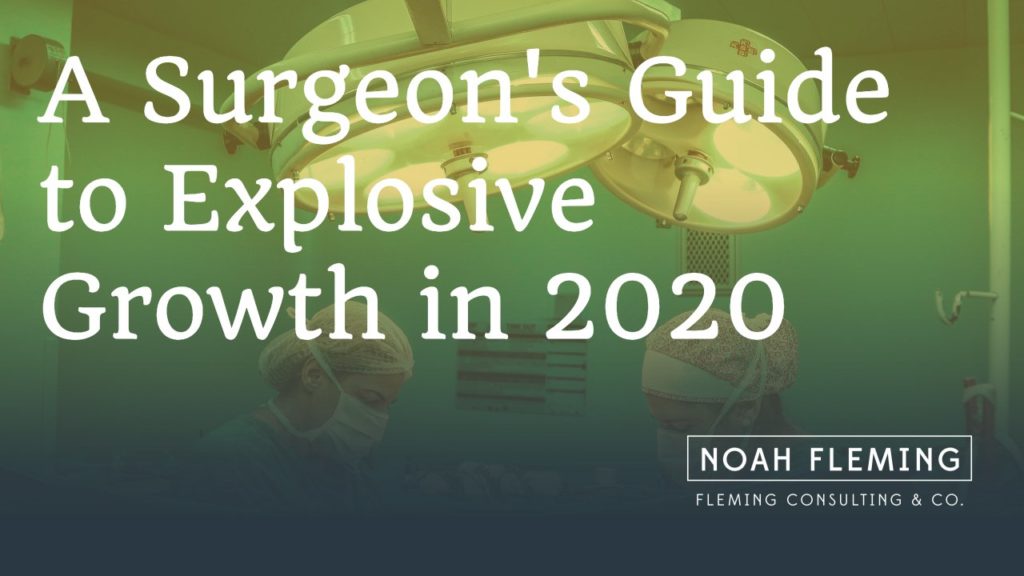This past weekend I finished a re-read of one of my favorite books – it’s by a surgeon who’s got more to teach us about sales than just about any other “expert” out there.
When Dr. Atul Gawande got a call in late 2006 from the World Health Organization, he was a bit shocked by their request. They wanted to get his help in creating a program that would reduce the number of deaths and illnesses from surgeries that would apply to ANY hospital on the planet.
They wanted something that would work in Downtown Manhattan, Timbuktu, and a remote hospital set up on a battlefield.
The task sounded impossible. They didn’t have a budget, and the goal was outrageously aggressive.
Just how aggressive was their goal?
Consider this: In 2004, the number of surgeries performed every year was about 230 million. And each year, around seven million people came out of surgery disabled, and over a million died because of complications!
It sounded impossible, by Gawande was up for the challenge.
Here’s my favorite part. Not only did he do it, but he succeeded beyond anybody’s wildest dreams. He was able to implement a process that reduced deaths and illnesses by between 30-47% in any hospital, anywhere on the planet. Even in the best-equipped hospitals, the result was the same…an over 30% reduction across the board.
What if you could increase sales by 30% across the board?
Or increase your revenue this year?
Or increase your conversion rates?
Sounds crazy, right? Well, it might not be that crazy when you hear how he did it.
His solution wasn’t overly complex.
There was ZERO technology involved.
There was no new drug introduced and nothing overly complex.
He used one of my favorite tools of all time.
The checklist.
You’ve heard me talk about the power of checklists in other tidbits (including this one, and this one, and this one). But a list that saved lives!?
Now we’re talking.
Of course, not everyone believed it.
Many doctors felt that the checklist was beneath them. They thought that it was an admission that they needed help or weren’t masters of their domain. They were arguing, “I spent four years doing my undergrad, then two years in med school, and then five years working my butt off in hospitals! I know what I’m doing, and I don’t need your little checklist to help! On top of that, every patient is different, and every surgery is different–you can’t capture what I do in a checklist. You think I’m going to use a checklist?”
I hear something similar in many companies where we implement extremely useful–and sometimes elementary–solutions to drive dramatic and VERY profitable results.
“I’ve been doing sales for 35 years! No new tool, process, or CRM is going to change what I’ve been doing.”
“If increasing revenue was that simple, we’d already be doing it. Our customers aren’t buying right now because our prices are too high.”
“We’ve already tried something like that, and it didn’t work.”
“We’re already doing something like that. What else can you show us?”
Nine times out of ten, they’re not doing something similar, and they haven’t in the past.
We’re often quick to dismiss the simple things that generate results because they’re new, or different.
The moral of today’s tidbit is simple. Actually, there are a couple.
1 Don’t dismiss something just because it seems to simple or too easy.
2) Don’t let others in your company tell you that something you know is essential is beneath them. There’s a reason your pilot still walks around the plane with a simple checklist before take-off, and you can thank your lucky stars for the checklist that reminded your surgeon to wash her hands before slicing you open.
Here’s Your Challenge: Consider an essential area of your business like sales or customer experience–where do you need more structure or routine?
- How would your business benefit from a new customer checklist?
- Do you need a process for every time a customer walks into your business, or how the phones are answered?
- What type of post-sale customer retention process do you have in place?
- Is there a process to ensure all quotes are followed up on?
Have you defined your sales process? In my experience, a company with a defined sales process or a company that puts one into place. It’s not uncommon for sales teams to see 10-20% increases in sales revenue after putting the right processes into place.
Here’s another way to think about it.
In what areas of your business could simple, daily, routine tasks have a remarkable impact on your company’s growth?
What proactive sales, marketing, and growth-focused tasks could your people engage in?
I now have availability for one more 1-Day Sales Process™ in February and one in March – could this be your ticket to a 10-20-30% increase in revenue growth?
Remember, we can help you build your processes in Sales, Sales Management, Referral Generation, Customer Onboarding & Experience, Customer Service, Customer Retention & Reacquisition, Strategic Decision Making.
Book your call now to see if the 1-Day Sales Process makes sense for your company.
Best,
Noah
P.S. You can read more about the story described above in Dr. Gawande’s excellent book, The Checklist Manifesto
This is the Tuesday Tidbit from December 3, 2019
